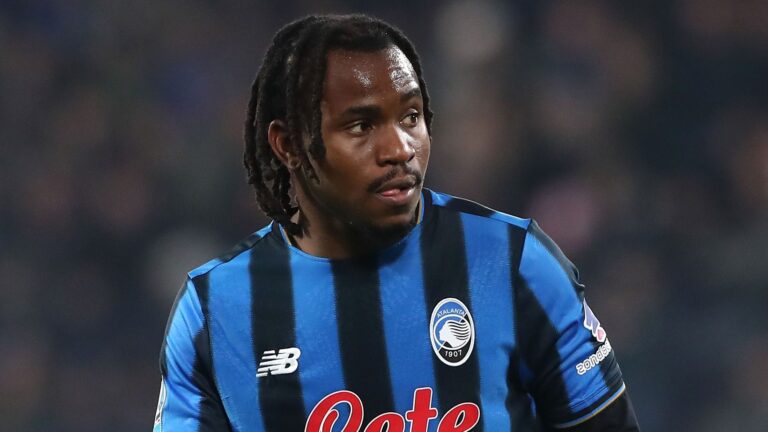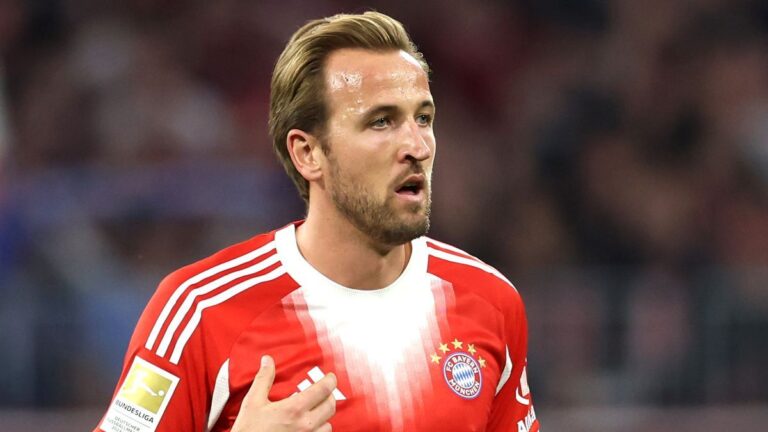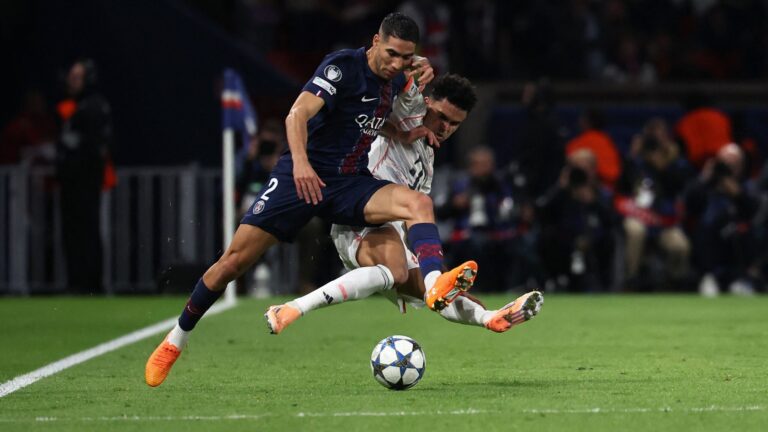


Navigating FC Barcelona’s Stadium Relocation Under Hansi Flick’s Leadership
As FC Barcelona and coach Hansi Flick confront fresh obstacles in returning to the historic Camp Nou, city officials are prioritizing fan welfare, prompting a necessary shift to a backup arena amidst ongoing renovations.
Escalating Tensions Over Camp Nou’s Return Approval
Key figures at the club, such as President Joan Laporta and Institutional Vice-President Elena Fort, recently expressed optimism for swift authorization that failed to materialize, according to sources from Sport. Municipal leaders attributed the rejection primarily to unresolved safety measures, stressing the importance of thorough risk assessments over accelerated schedules to safeguard spectators.
Official Remarks on Core Safety Commitments
Deputy Mayor Laia Bonet spoke to the media, explaining that while the stadium’s enhancements are nearly complete, fans cannot enter until all safety standards are thoroughly addressed. “We’ve finished the first phase of the overhaul and are moving toward final approvals, but it’s essential to confirm that every precaution is fully implemented,” Bonet stated. “We’re in sync with FC Barcelona‘s desire for a quick and seamless return to Camp Nou, though our primary responsibility as the City Council is ensuring the well-being of everyone involved, which demands rigorous inspections by specialists.”
Exposing the Detailed Safety Gaps
A council insider outlined the specific hurdles delaying the process. “Our team is examining all aspects closely,” they revealed. “The main issues include insufficient emergency routes, areas still under construction, and failures to meet regulatory benchmarks. Furthermore, accessibility problems affecting safe navigation persist, like poor signage, shaky railings, incomplete steps, and restricted entry for vehicles. Even with substantial advancements, these concerns are manageable, and we’re confident in addressing them promptly to enable the stadium’s revival.”
Transitioning to an Alternative Arena for FC Barcelona’s Fixtures
Due to Camp Nou‘s inaccessibility, FC Barcelona has confirmed that their next matches will be held at the Estadi Olímpic Lluís Companys in Montjuïc. The squad is preparing to face Real Sociedad this upcoming Sunday night at the temporary location, with UEFA also verifying that the clash against Paris Saint-Germain on October 1 will take place there. This interim setup is now influencing both domestic and European games, requiring the team to adjust their strategies and routines accordingly.
Outlook for FC Barcelona’s Eventual Homecoming
While the exact schedule for Camp Nou‘s complete readiness is still uncertain, club officials and local authorities are working diligently toward a speedy fix. Under Hansi Flick’s direction, FC Barcelona is determined to resume matches at their iconic venue as soon as safety evaluations are complete. Currently, Montjuïc acts as a stopgap option, and industry experts believe that continued improvements-possibly shaped by the latest 2025 data on European stadium security standards-might expedite the process, helping maintain the team’s performance levels.
Current Dynamics Surrounding Camp Nou’s Renovation Woes
The persistent difficulties with FC Barcelona‘s cherished stadium, Camp Nou, have escalated dramatically, compelling the organization and its followers to seek other options during Hansi Flick’s command. This stems from regulatory obstacles, including critical safety issues and conflicts over urban development tied to the stadium’s upgrade efforts.
Originally planned to update the vast 98,000-capacity site, the Camp Nou project has encountered numerous setbacks. These complications have grown more pressing under Flick’s stewardship, as the coach strives to restore the team’s prominence after a season without titles. With authorities referencing incomplete permits and environmental reviews, FC Barcelona must now adapt to hosting games away, which could impact their momentum and supporter involvement.
Core Factors Driving the City Council’s Rejection
Multiple elements underpin the local government’s decision to block FC Barcelona‘s access to Camp Nou. Chief among them are worries about project timelines and adherence to area regulations. Officials have highlighted the necessity for the stadium to comply with enhanced earthquake-resistant requirements, particularly following recent assessments that flagged potential hazards in the region.
Environmental factors are also pivotal in this ruling. Given Camp Nou‘s position in a crowded city area, concerns arise regarding increased traffic and noise from events. Opponents contend that the proposed expansions, featuring greater seating and retail additions, might worsen these problems. This choice aligns with a wider movement toward eco-friendly city planning, influencing how FC Barcelona manages its relocation plans.
In response, under Hansi Flick, the club’s leadership is focusing on player readiness amid these challenges. Flick, celebrated for his strategic expertise from his time at Bayern Munich, has underscored the value of resilience in press conferences, noting that “flexibility is crucial for achieving victories.”
Effects of the Relocation on FC Barcelona During Hansi Flick’s Era
This mandatory venue change is transforming how FC Barcelona operates, especially as Flick rolls out his game plan. Lacking their home ground, the team may shift to sites like the Estadi Olímpic Lluís Companys or beyond, potentially weakening their edge in vital La Liga and Champions League contests. This occurs as Flick integrates emerging stars such as Pedri and Gavi while overseeing veterans like Robert Lewandowski.
Supporters are also affected, facing adjustments in tickets, transportation, and game atmospheres. For a team so intertwined with its local heritage, this stadium shift for FC Barcelona could shift the deep emotional ties that characterize Catalan soccer traditions.
Potential Gains from the Temporary Move
Despite appearing as a hindrance, this relocation might offer unforeseen advantages for FC Barcelona and its base. For example, a short-term relocation could hasten the finalization of Camp Nou‘s improvements, delivering a cutting-edge space that boosts attendee security and convenience. Upgraded arenas typically include better access, green initiatives, and superior facilities, enhancing the entire event experience.
Additionally, this phase could spark creative ways to connect with fans. FC Barcelona might develop augmented reality experiences or advanced online tools to sustain engagement, converting an obstacle into a chance for advancement under Flick’s influence.
Helpful Advice for Fans Amid the Shift
While FC Barcelona deals with this venue change due to the Camp Nou denial, consider these useful suggestions to remain connected and informed:
- Monitor Official Sources: Keep up with FC Barcelona‘s official app and social platforms for instant updates on game sites and ticketing under Hansi Flick’s management.
- Arrange Travel Early: Should matches relocate, utilize transit apps to dodge congestion; look for parking solutions near the alternative venues.
- Check Out Adaptable Ticket Choices: Investigate options for transferring season tickets or obtaining refunds to reduce inconvenience, and join fan communities for carpooling or discounts.
- Join Digital Events: Take part in virtual viewings or club-organized activities to preserve the community spirit without needing to attend in person.
Implementing these strategies can ease the transition, allowing fans to continue backing the team seamlessly.
Examples from Other Clubs’ Venue Transitions
Examining similar scenarios from fellow teams offers lessons for FC Barcelona‘s approach. Take Manchester United, for instance, which temporarily used Old Trafford alternatives during renovations and maintained strong performance while increasing earnings from bigger audiences.
Likewise, Arsenal’s move to the Emirates Stadium in 2006 from Highbury brought modern amenities and higher attendance. These instances illustrate that, with strong guidance like Flick’s, temporary relocations can yield lasting benefits for FC Barcelona, even with early challenges.
Insights from Supporters and Industry Experts
Based on conversations in online groups and professional reviews, opinions on the Camp Nou denial are varied. A fan posted online, “It’s disappointing to be away from Camp Nou, yet watching Flick’s tactics unfold in a different setting is intriguing.” Experts note that leaders like Flick excel in changing circumstances, referencing his ability to revitalize squads during shifts.
This input from the community highlights the robustness of the FC Barcelona fanbase, showing how a venue relocation might ultimately deepen the club’s relationship with its worldwide supporters.
Background on the Camp Nou Controversy
FC Barcelona fans have been deeply invested in the ongoing saga surrounding their iconic home, Camp Nou. Under Hansi Flick’s leadership as the club’s head coach, the team faced a major setback when the Barcelona City Council rejected plans to return to the refurbished stadium. This decision has forced the club to explore options for relocating their matches, highlighting the challenges of balancing historical legacy with modern urban development. Keywords like “FC Barcelona stadium relocation” and “Camp Nou rejection under Hansi Flick” underscore the urgency of this issue in the football world.
The rejection stems from concerns over environmental impact and community disruptions during the renovation process. Barcelona’s city officials emphasized the need for sustainable practices, which clashed with the club’s ambitious timeline for reopening. This has not only affected matchday experiences but also raised questions about the future of one of Europe’s most storied venues.
Key Factors Leading to the Rejection
- Environmental and Infrastructure Concerns: City planners highlighted potential strain on local resources, including traffic and waste management, during the stadium’s upgrades. Initiatives like “sustainable stadium relocation” are gaining traction as cities prioritize eco-friendly sports facilities.
- Community Pushback: Residents near Camp Nou voiced opposition through public hearings, citing noise pollution and gentrification risks. This reflects broader debates in “Hansi Flick’s FC Barcelona era” about how football clubs engage with their neighborhoods.
- Legal and Regulatory Hurdles: New zoning laws in Barcelona have added layers of complexity, making it harder for the club to secure permits for large-scale projects.
Hansi Flick’s Leadership Amid the Turmoil
Hansi Flick, known for his tactical prowess from his time at Bayern Munich, stepped into a challenging role at FC Barcelona. With the Camp Nou return rejected, Flick has had to adapt his strategies, focusing on team morale and performance while navigating this stadium crisis. His leadership style, emphasizing unity and innovation, is being tested as the club considers temporary venues for key matches.
Flick’s vision involves integrating youth development with high-stakes competition, but the uncertainty around the stadium has shifted priorities. For instance, during press conferences, he’s discussed how “FC Barcelona relocation under Hansi Flick” could open doors to new fan experiences, like advanced technology in alternative arenas.
How Flick is Steering the Club Forward
- Strategic Adaptations: Flick has prioritized training sessions at alternative sites to maintain rhythm, incorporating keywords like “Camp Nou alternative under Hansi Flick” to keep the conversation alive in media coverage.
- Player and Fan Communication: Regular updates via social media help mitigate frustration, with Flick emphasizing resilience in the face of “Barcelona City Council stadium rejection.”
- Long-Term Planning: He’s advocated for modular stadium designs that could allow for quicker relocations, drawing from successful models in other leagues.
Potential Relocation Options and Their Implications
As FC Barcelona explores relocation, several venues have emerged as frontrunners. This shift could redefine the club’s identity, with options ranging from nearby municipal stadiums to international partnerships. The process involves weighing factors like capacity, accessibility, and branding opportunities to ensure minimal disruption to the fan base.
One prominent option is the Estadi Olímpic Lluís Companys, which has hosted Barcelona games in the past. However, discussions also include modern facilities outside the city, potentially offering perks like better public transport integration.
Pros and Cons of Key Relocation Sites
- Estadi Olímpic Lluís Companys:
- Pros: Close proximity to Camp Nou reduces travel for fans; already equipped for major events, aligning with “Hansi Flick’s stadium strategy.”
- Cons: Limited capacity compared to Camp Nou, which might affect ticket sales and revenue streams related to “FC Barcelona compelled relocation.”
- Other Regional Venues:
- Pros: Newer facilities could introduce eco-friendly features, enhancing the club’s image in “sustainable football relocation” efforts.
- Cons: Longer commutes for supporters could lead to lower attendance, impacting the vibrant atmosphere Flick aims to cultivate.
- International Temporaries:
- Pros: Partnering with stadiums abroad might boost global appeal and open merchandising opportunities tied to “Hansi Flick leadership challenges.”
- Cons: Logistical complexities, such as visa issues for players, could disrupt training routines.
This situation underscores broader trends in football, where stadium decisions influence everything from player performance to fan loyalty. For FC Barcelona, the relocation debate is a pivotal moment, potentially inspiring innovations in stadium design and community relations.
The Financial and Operational Impacts
Relocating the stadium under Hansi Flick’s watch brings significant financial considerations to the forefront. The club must balance immediate costs with long-term gains, such as potential revenue from sponsorships in a “post-Camp Nou era.” Budget reallocations could fund player acquisitions or youth programs, keeping the team competitive in La Liga and European competitions.
Flick has been vocal about turning this challenge into an opportunity, using keywords like “FC Barcelona stadium rejection implications” to frame public discussions. Operational changes include enhanced digital ticketing and virtual fan experiences to bridge the gap during transitions.
Breaking Down the Costs
- Short-Term Expenses: Renting alternative venues and transporting equipment could add millions to the budget, exacerbated by inflation in the sports industry.
- Long-Term Benefits: A successful relocation might attract new partnerships, boosting “Hansi Flick’s FC Barcelona vision” through modern amenities like VR fan zones.
- Risk Mitigation Strategies: The club is exploring insurance options and contingency plans to safeguard against further delays in the Camp Nou project.
In exploring these aspects, FC Barcelona is not alone; similar issues have affected clubs like Tottenham Hotspur. This shared context adds depth to the conversation around “stadium relocation in modern football.”
Fan Engagement and Community Response
Engaging fans has been central to Hansi Flick’s approach during this period. With the City Council’s rejection, the club has ramped up efforts to involve supporters in decision-making, from surveys on preferred relocation sites to exclusive content about “Camp Nou return updates.” This interactive strategy helps maintain the passionate community that defines FC Barcelona.
Keywords such as “Hansi Flick’s leadership in crisis” are woven into club communications to foster a sense of shared purpose. Ultimately, how the club handles this relocation could set a precedent for fan-centered management in the sport.









